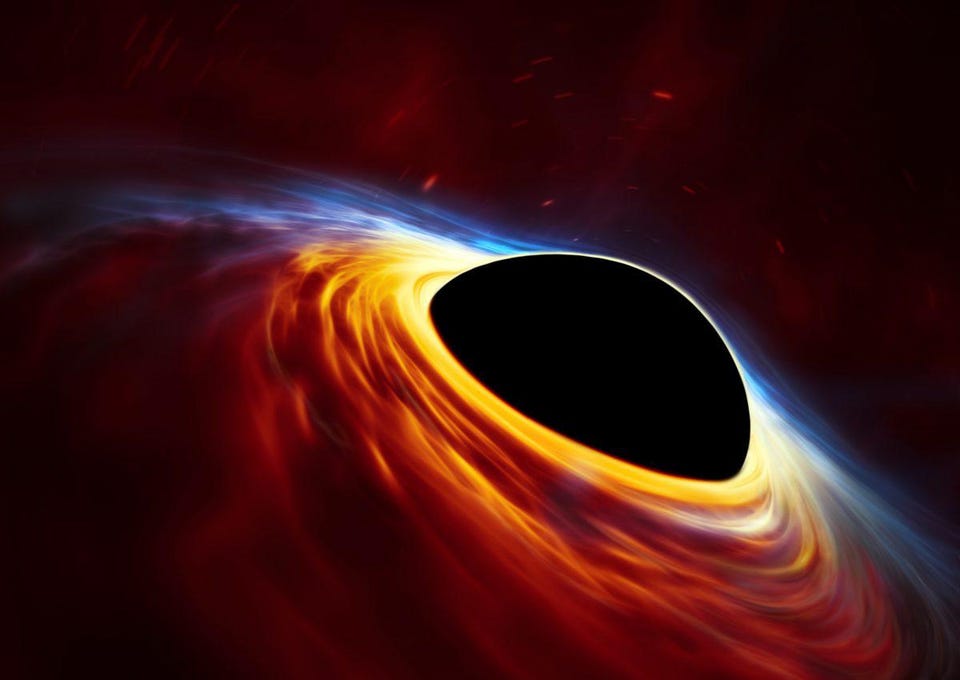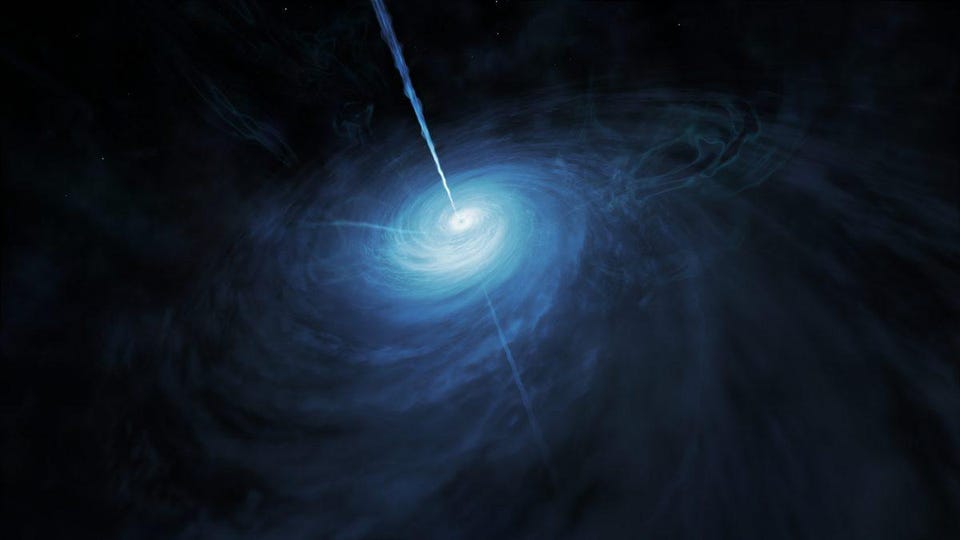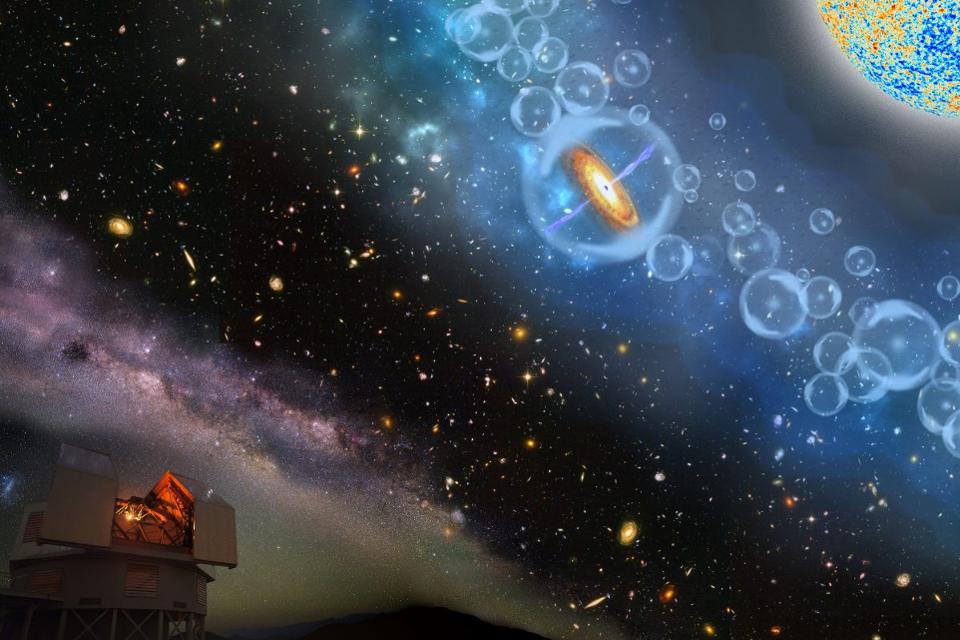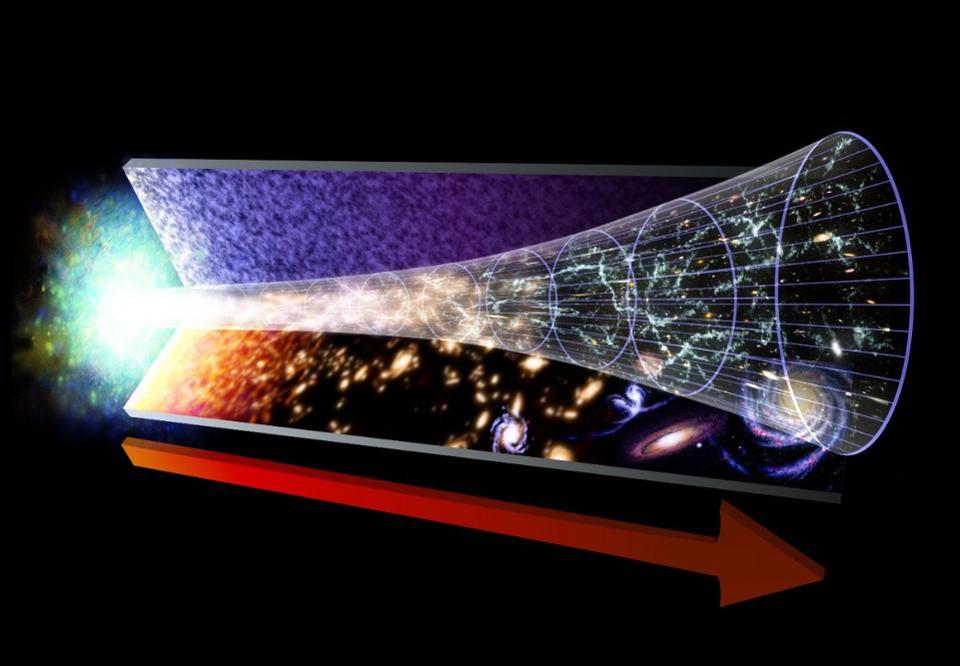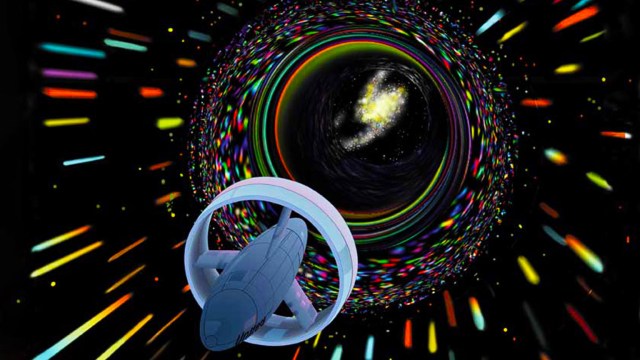Ask Ethan: Could axions be the solution to the dark matter puzzle?
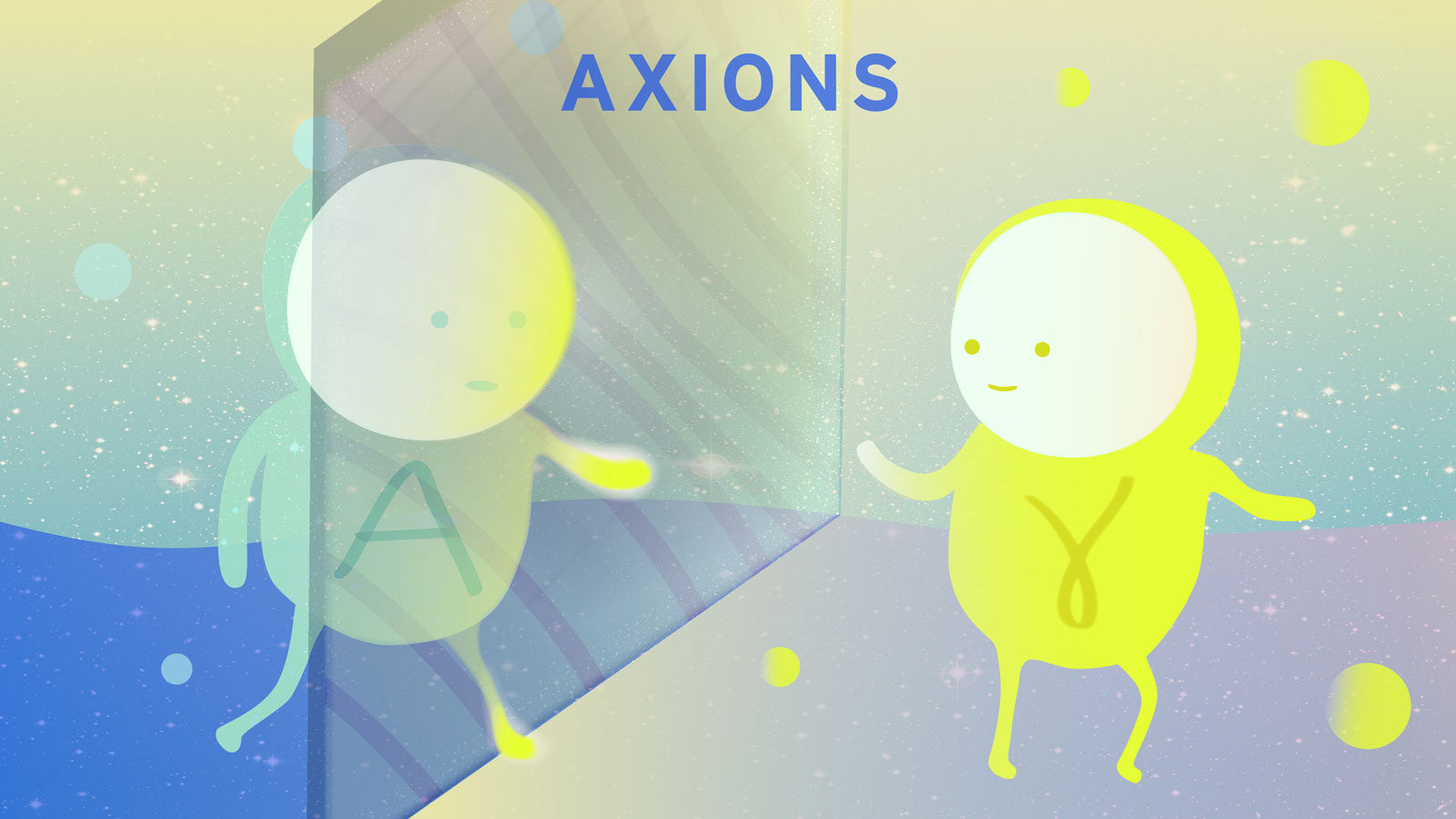
- Axions are a particle theorized to exist from a completely unrelated particle physics puzzle: Why is there no CP-violation in the strong interactions?
- Instead of assuming the Universe is finely tuned, we can invoke a new symmetry, and for each broken symmetry, we get a new particle.
- That particle, the axion, comes naturally out of the theory. If the Universe cooperates, it just might solve the dark matter problem.
Astrophysically, normal matter — even with all the different forms it can take — cannot on its own explain the Universe we observe. Beyond all the stars, planets, gas, dust, plasma, black holes, neutrinos, photons, and more, there’s an overwhelming suite of evidence suggesting that the Universe contains two ingredients whose origins remain unknown: dark matter and dark energy. Dark matter, in particular, has an incredible amount of astrophysical evidence supporting its existence and abundance — outmassing normal matter by a 5:1 ratio. Still, its particle nature remains elusive, though we’re quite certain it must have been cold, or slow-moving at early times, rather than hot, where it would have moved faster in the young Universe.
One of the leading candidates for its nature, the axion, remains compelling more than 40 years after it was first hypothesized, though it’s rarely even presented to the general public. Could this intriguing theoretical particle be the solution to the dark matter puzzle? That’s what Reggie Grünenberg wants to know, asking:
“Axions are speculative particles and hot candidates for dark matter particles that are supposed to have been created primarily in the Big Bang and since then permanently within the cores of stars through a mechanism called the Primakoff effect. This would mean that stars would ‘produce’ dark matter – and that they would need to lose this way much more mass than through nuclear fusion. And that the amount of dark matter in galaxies would grow over time, thus accelerating orbiting stars ever more. Could this model really work?”
There’s a lot to unpack here. But if we go one step at a time, you just might come away thinking that the axion could one day be the solution to the greatest cosmic mystery of all.
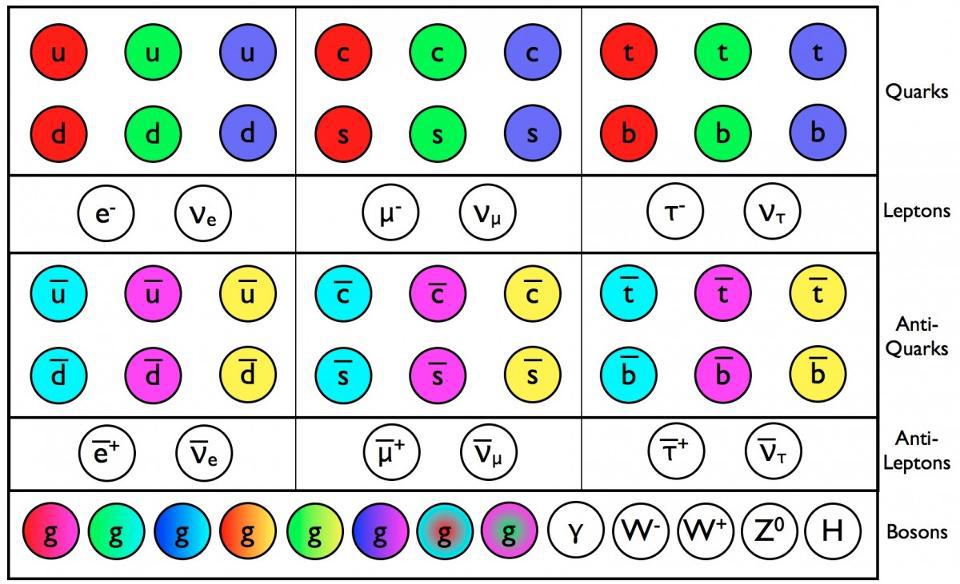
The motivation
When we think of the Standard Model of elementary particles, we normally think about the fundamental particles that we know exist in the Universe and the interactions that occur between them. The six flavors of quarks (up, down, strange, charm, bottom, and top) and leptons (the electron, muon, and tau, plus their neutrino analogues) make up the fermions of the Standard Model, while the bosons are the photon (mediating the electromagnetic force), the W and Z bosons (mediating the weak force), the eight gluons (mediating the strong force), and the Higgs boson (left over from electroweak symmetry breaking).
There are three type of symmetries in particle physics that govern the interactions of the fermions under each of these fundamental interactions:
- C (charge conjugation), which replaces each particle with its antiparticle counterpart
- P (parity), which replaces each particle with its mirror-image counterpart
- T (time reversal), which replaces interactions going forwards in time with ones going backwards in time
Each interaction has a mathematical property owing to its group structure: either abelian or non-abelian. Electromagnetic is abelian; the strong and weak interactions are non-abelian. If you’re abelian, you should obey all of these symmetries; if you’re non-abelian, you can violate any one or two of them, but not all three together.

Experimentally, the electromagnetic interaction is, in fact, symmetric under charge conjugation symmetries, parity symmetries, and time reversal symmetries, both individually and in any possible combination. Similarly, the weak interaction is not symmetric under any of them; it violates charge conjugation symmetry, parity symmetry, and time reversal symmetry, as well as the combinations of CP, CT, and PT symmetries. Only the combination CPT holds for the weak interaction, as it should.
Now, here’s the surprise.
The strong interaction is non-abelian, just like the weak interaction. But for some reason, we don’t see any of these violations in the strong interactions. Instead, they conserve every symmetry, both individually and in every possible combination: C, P, T, CP, CT, and PT, as well as the mandatory CPT. In the weak interactions, the combination of CP, in particular, occurs at about the 1 in 1,000 level. But in the strong interactions, it’s been verified that if it occurs at all, it’s at less than the 1 in 1,000,000,000 level!
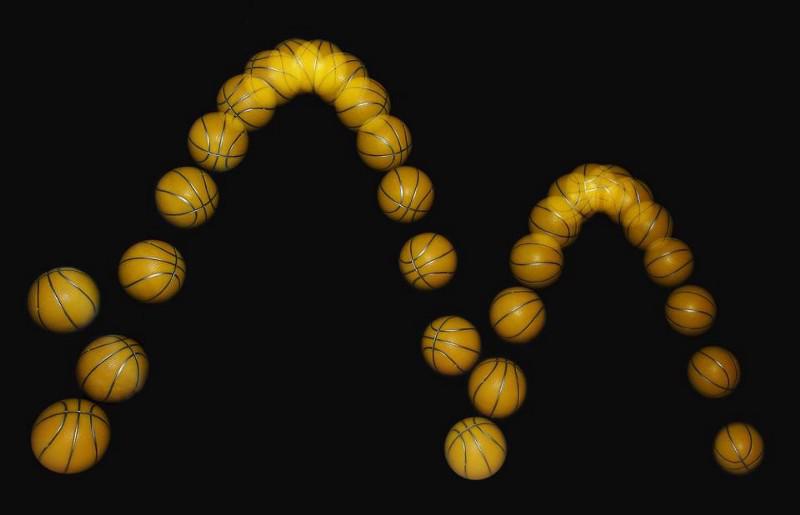
Whenever something that isn’t explicitly forbidden doesn’t actually occur — as expressed by Murray Gell-Mann’s totalitarian principle, “everything not forbidden is compulsory” — we always seek to explain why. There’s nothing in the Standard Model that forbids the strong interaction from violating this CP symmetry, and so you really only have two options:
- You can simply assert, “well, the Universe is like this and we don’t know why, and either this parameter is zero or very small, and that’s just the way it is, with no explanation.” That’s possible, but it’s dissatisfying.
- You can hypothesize that something is suppressing this CP-violation, and the “something” that does this very well is if we introduce a new symmetry. (Having one of the quarks be massless would also do the job, but all six of the quarks appear to have positive, non-zero masses.)
The first symmetry that was concocted that satisfies this was devised by Roberto Peccei and Helen Quinn in 1977: the Peccei-Quinn symmetry. They proposed the existence of a new scalar field, and that field should suppress all CP-violating terms in the strong interactions. When the symmetry breaks, which it ought to do very early on as the Universe cools, it should give rise to the existence of a new particle with a non-zero mass: the axion. It should be light, uncharged, and could arise as a consequence of needing to have an additional symmetry to “protect” the CP-symmetry in the strong interactions.
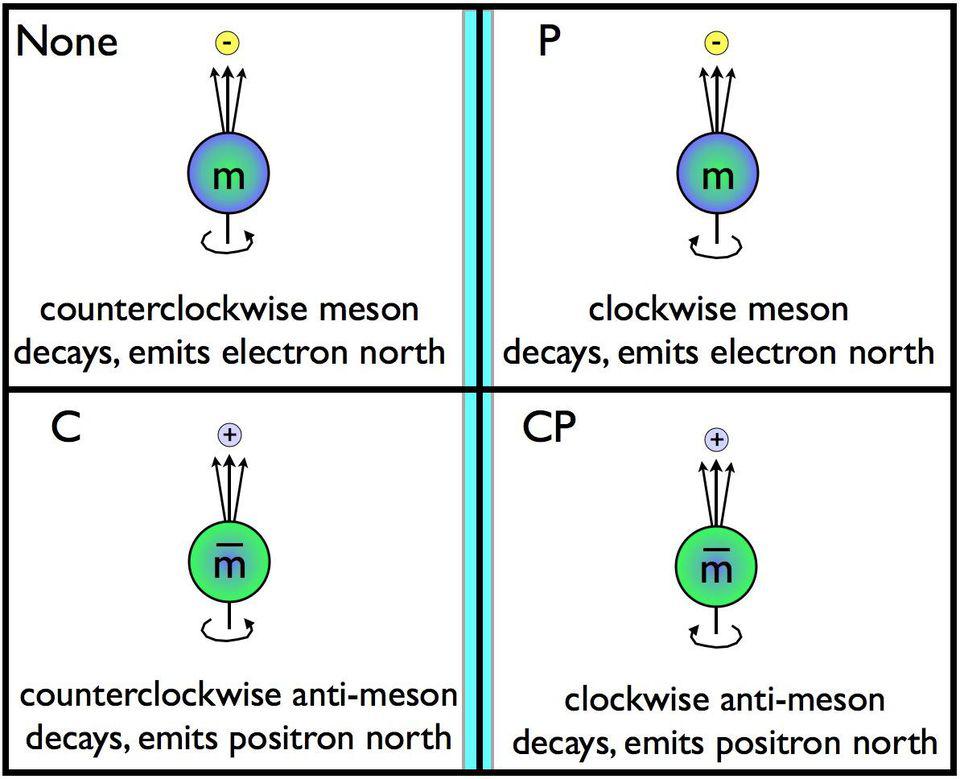
The three ways to make an axion
So, if there is a new symmetry to provide a solution to the otherwise mysterious strong CP problem, and that symmetry is broken in the early Universe, either before/during inflation or only a fraction of a second after it ends, what does that mean for the properties of the particle that must come into existence as a result: the axion?
It means that the axion:
- a very weak coupling strength to any Standard Model particles
- a very light mass, because couplings and mass are proportional for axions
- should be produced, in the Universe, via three different methods
One of the ways to produce axions is in the earliest stages of the hot Big Bang. The Universe reached its maximum energy, temperature, and density during this epoch, and everything that can be produced from available energy via Einstein’s E = mc2 should be, and that includes the very light axion. Because of their extremely low mass, they’d still be moving very fast even today, meaning that they would serve as a type of hot dark matter. Of course, the hot Big Bang also has a formula for how many of these particles should be produced, and that tells us that, at most, these “thermal axions” could make up perhaps ~0.1% of the dark matter, and no more.
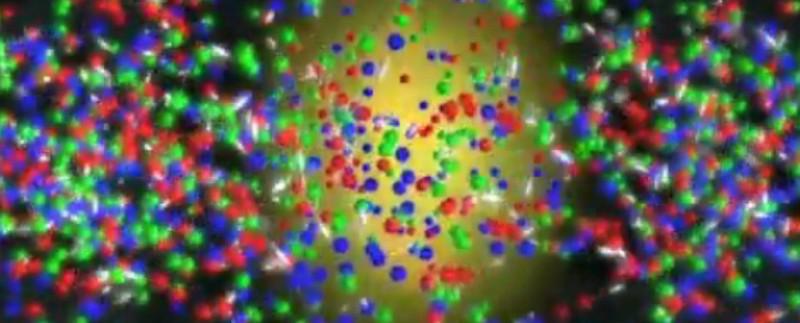
The second way to produce axions is a little more interesting, and is related to the specific question that was asked here. If the axion exists as a theoretical particle, then it should have a non-zero coupling to the electromagnetic interactions and, in particular, to the photon. This requires a modification to Maxwell’s equations to include possible photon-axion interactions, whose consequences Pierre Sikivie worked out back in 1983. When the right conditions are present — involving photons, in the presence of electric and magnetic fields, interacting with the atomic nuclei of normal matter — those photons can convert into axions via the Primakoff effect.
This could occur under a variety of conditions, including:
- as photons travel great distances through the plasmas present in intergalactic space
- in the magnetospheres of neutron stars
- in the centers of massive enough stars
- in a properly configured laboratory experiment
Back in the late 1990s and early 2000s, photon-axion oscillations were seriously considered as a potential explanation for why ultra-distant supernovae appeared fainter than expected; today, there are searches for indirect signatures of axion interactions that emerge from stars. Although axions can be produced in this fashion, they again would be hot dark matter, and again could not even amount to 1% of the total amount of dark matter in the Universe.
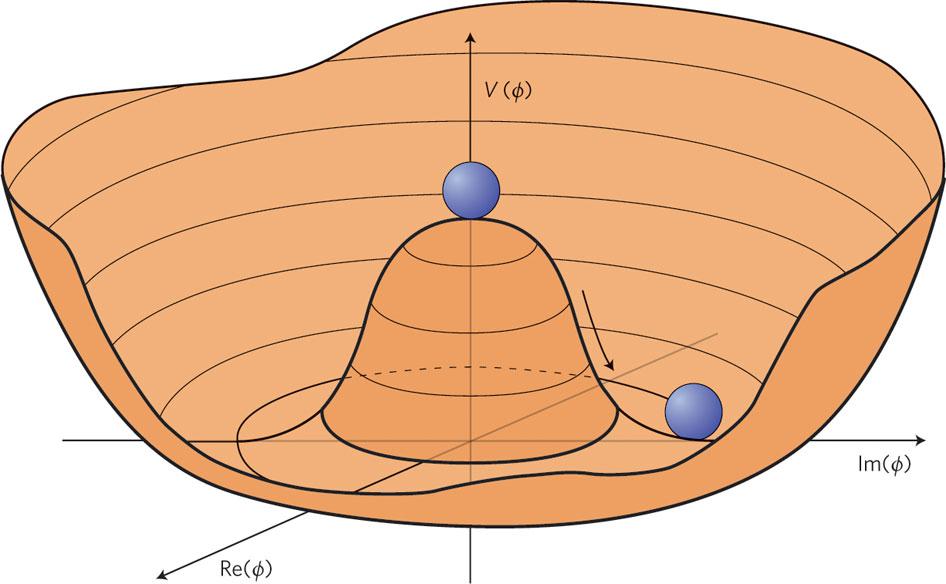
But the third way is really fascinating. The Peccei-Quinn symmetry, as above, can be modeled as a ball atop a peaked potential that has a valley of equal depth around it in all directions: astutely known as either the “wine bottle” or “Mexican hat” potential. (Which term is used depends on whether the physicist teaching you prefers alcohol or cultural insensitivity.) When the Peccei-Quinn symmetry breaks, which is either before, during, or immediately after inflation, the ball rolls down into the valley, where it can freely and frictionlessly spin around. But then, an enormous amount of cosmic time later — on the order of ~10 microseconds — a different transition occurs: quarks and gluons become bound into protons and neutrons, known as confinement.
When this occurs, the bottle/hat potential tilts slightly to one side, causing the ball to oscillate around lowest point of the tilted bottle/hat. As the ball oscillates this time, there’s a tiny bit of friction, and that friction causes axions, with a tiny, non-zero mass and an enormously suppressed amount of CP-violation, to be ripped out of the quantum vacuum. We don’t know what the mass of the axion is or even what many of its specific properties are, but the lower in mass it is, the far greater the number of axions will be created during this transition. Importantly, these axions are born moving very slowly, making them cold, and not hot, dark matter. Although it’s model dependent, if the axion is in the range of having a few micro-electron-Volts of rest mass energy, axions could indeed compose up to 100% of the dark matter in our Universe.
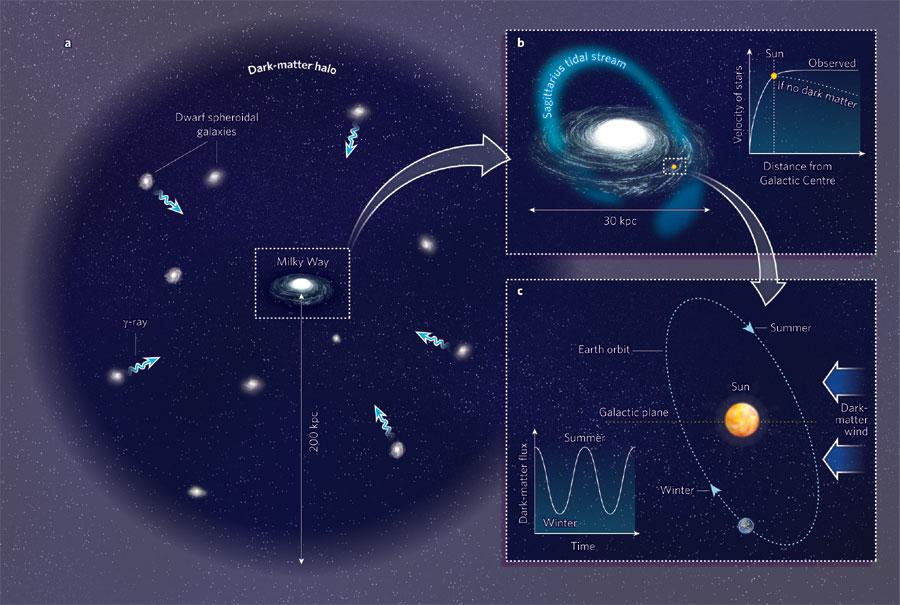
But could they really be the dark matter?
This is the key question, and the only way to answer whether axions really are the dark matter is to directly detect them. The first genuine effort at direct detection relied on the electromagnetic properties of the axion and further grew out of Sikivie’s early work by applying a strong magnetic field to induce axions to convert into photons. A cryogenically cooled and correctly sized electromagnetic cavity could cause axions — if we could properly guess the mass of the axion — to oscillate into photons of an appropriate frequency. Known as a cavity haloscope or a Sikivie cavity, it led scientists to conduct the Axion Dark Matter eXperiment (ADMX).
As the Earth orbits the Sun and moves through the Milky Way, dark matter would not only continuously pass in and out of this cavity, but the density of dark matter inside would change with our cumulative motion through the galaxy. As a result, we should be able to either detect axions, if we guess its inherent properties correctly and its densities are high enough, or rule out axions composing a certain fraction of the dark matter over a specific mass range. As perhaps the second most popular dark matter candidate behind the tightly constrained WIMPs, for weakly interacting massive particles, axions could provide a two-for-one deal, as they’re a potential solution to both the strong CP problem and the dark matter problem.
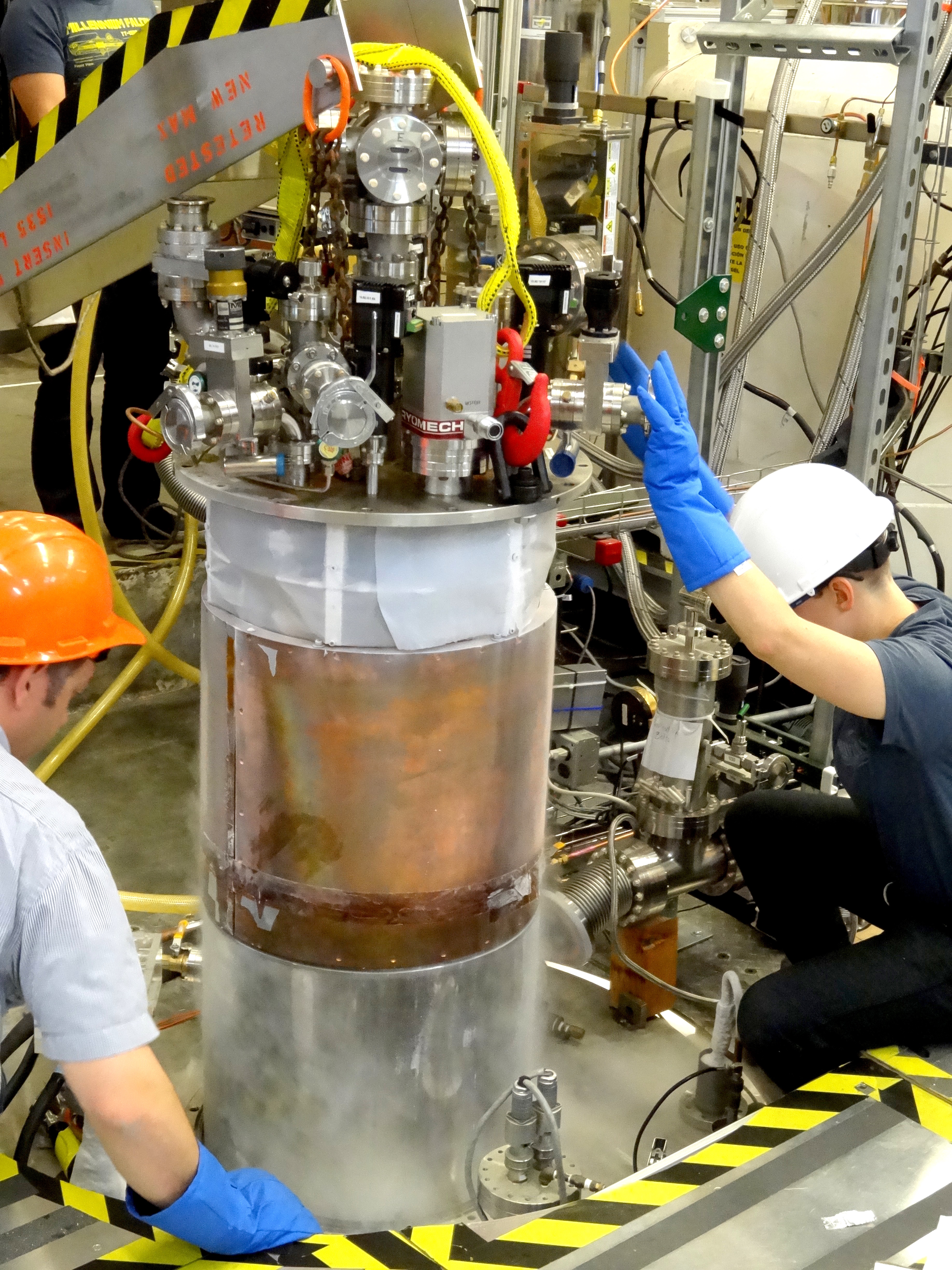
So far, ADMX and the many other experiments that are searching for axions have yet to find a robust, positive signal, but that should be an encouraging piece of information. Whereas many other dark matter searches have been announcing spurious detections for many years, ADMX has been steady and responsible. Over time, they have:
- ruled out axions over a substantial mass range
- eliminated the original axion model of Peccei and Quinn
- placed important constraints on the two most popular modern axion scenarios
- continued to refine their detector and increase their sensitivity
Unlike many of the other leading dark matter searches, ADMX and similar experiments don’t require enormous collaborations of hundreds or even thousands of people, and they don’t require the enormous facilities or the tremendous financial investments of the giant WIMP detectors like XENON.
Sure, finding a null result is never as exciting as finding a positive result. But in this line of work, every null result represents another important step forward: ruling out and more tightly constraining a previously unexplored scenario that could, but doesn’t, account for the dark matter in our Universe. More importantly, we can be confident that the scientists working on these experiments are conducting their work scrupulously and carefully, unlike those experiments that have spurred resource-wasting reproduction efforts, only to uncover that the original positive detections were flawed.
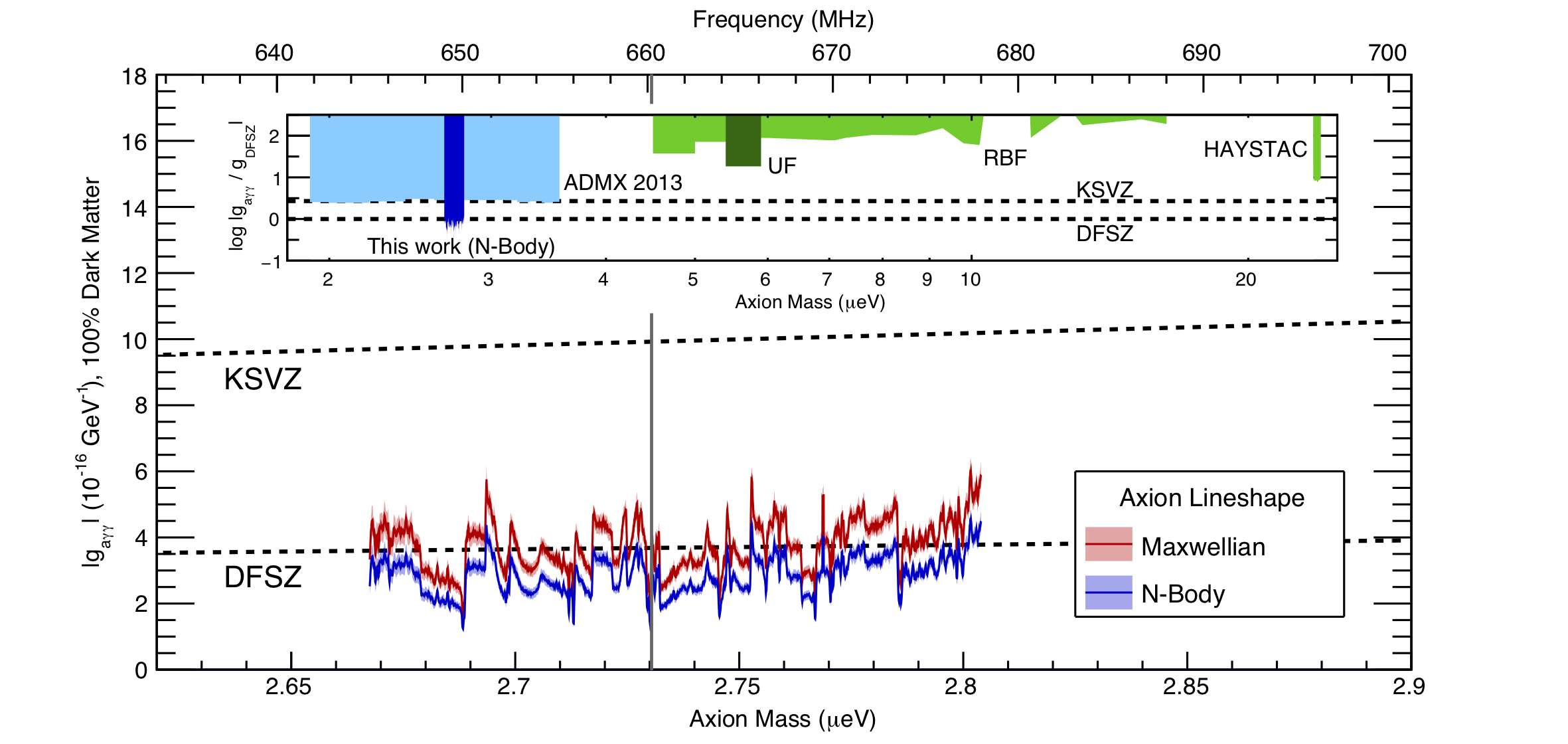
If axions exist, which they almost certainly do if there’s some sort of symmetry-based reason why there’s no observed CP-violation in the strong interactions, they could very well make up the dark matter. Although there are three main ways that axions would be produced in the Universe, it’s neither the ones made in the earliest stages of the hot Big Bang nor the ones made much later in stars and around stellar remnants that contribute substantially to the dark matter around us. Instead, it’s the act of quark confinement that produces large numbers of cold, low-mass axions that could make up the dark matter. It’s these axions that we’re particularly interested in finding, and what we’re most actively searching for.
Although it’s true that the detection of axions from any source would be revolutionary — after all, they’d be the first and only fundamental particle found that isn’t a part of the Standard Model — the greater prize at stake is to figure out the nature of dark matter, and also to understand why there’s no CP-violation in the strong sector. As we fumble around in the metaphorical dark, seeking to understand the Universe, it’s vitally important to remember the value each time we look where we’ve never looked before. We never can be sure just what nature will bring us. The only certainty is that if we fail to search beyond the known frontiers, we’ll never discover anything novel ever again.
Send in your Ask Ethan questions to startswithabang at gmail dot com!
